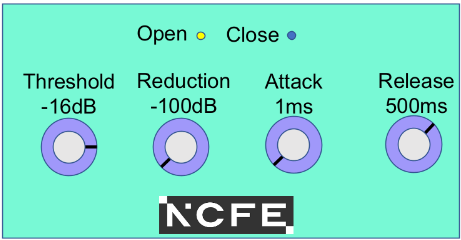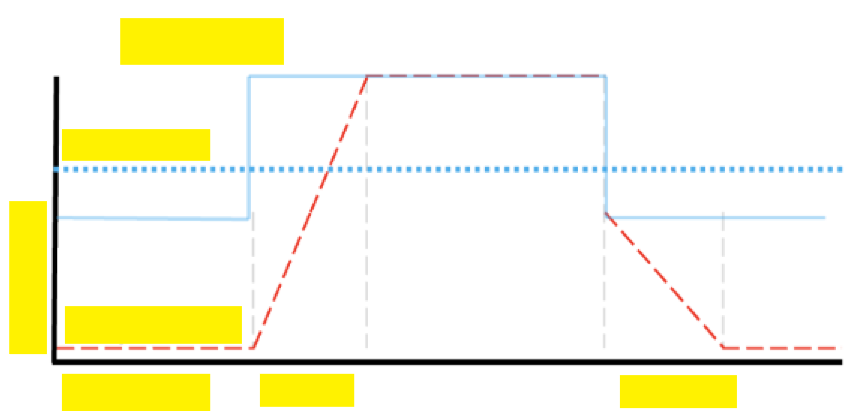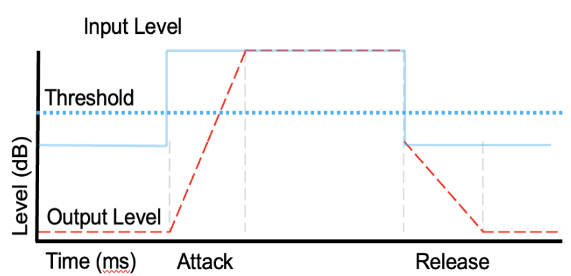Noise Gate
1/8
Earn XP
Description and Tags
Music Tech || MT CA2 - The Digital Audio Workstation
Name | Mastery | Learn | Test | Matching | Spaced |
|---|
No study sessions yet.
9 Terms
Why is bleed/spill an issue in recording?
This bleed can become an issue when we start to use compression and EQ.
To reduce the amount of bleed we can use a noise gate.
What is noise gate?
Designed to remove unwanted noise or sound from an audio signal.
This could be:
Gaps in vocal phrases.
Breaths.
String buzz.
Bleed from other instruments.

What are the main controls on a noise gate plugin?
Threshold.
Reduction.
Attack.
Release.
What is reduction on a noise gate?
This is the amount (dB) that the noise gate will turn down the incoming signal once it falls below the threshold.
This allows you to control how severe the noise gate reduction is.
What is the threshold on a noise gate?
Serves the opposite function as it does on a compressor.
When the incoming signal falls below the threshold, the noise gate will turn down the signal.
What is the attack on a noise gate?
This is the speed at which the noise gate will start to open once the signal passes the threshold.
Fast attack: the noise gate will open almost immediately.
Slow attack: the noise gate will take longer to respond to opening creating a smoother transition.
What is release on a noise gate?
This is the speed at which the noise gate will start to close once the signal has fallen below the threshold.
Fast release: the noise will close almost immediately and return to the level set by the amount of reduction.
Slow release: the noise gate will take much longer to close and reach the level set by the amount of reduction.
What is bleed/spill?
Refers to any unwanted sound captured by a microphone when recording.
For example: kick drum sound in the snare drum microphone.

Label the noise gate graph.
Input level
Threshold
Level (dB)
Output Level
Time (ms)
Attack
Release
